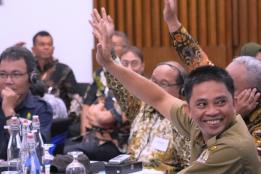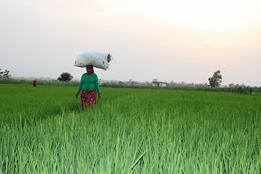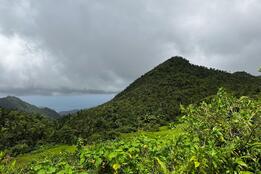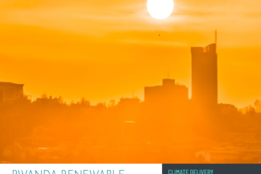The sugar palms in the forest, Ibu Nita explains, were planted by ancestors. “The sap tree has been passed down from generation to generation.” Only younger trees that can be tapped – so, to ensure a constant supply of sweet sap, the Adat - or traditional - people have been planting sugar palms, nurturing the forest in the process.
But before CIF funding through the Dedicated Grant Mechanism (DGM) helped the traditional community of Cibarani obtain official recognition, and before DGM support enabled Nita and other local women to start their own small business, they earned very little from their efforts. They had to sell through middlemen, who kept most of the value, and had to pay a 25 percent levy.
Now, with Adat recognition designating their land as customary forest and thanks to Indonesian law, they get to keep their full earnings. And by processing and packaging the sugar themselves, they add significant value. The bags are sold online for Rp. 40,000 (just under $2.50), through a partnership that supports social and economic promotion for rural groups.
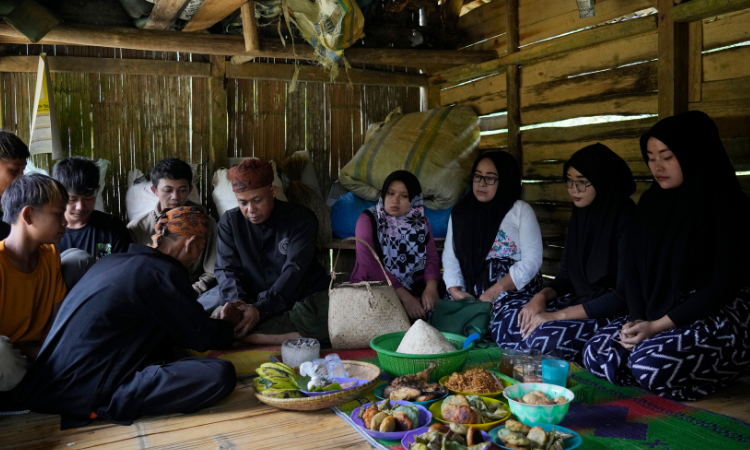
“This sap sugar is pure without preservatives, directly processed from the sap of the Cibarani customary forest,” the listing boasts, noting that it is a “community empowerment product” managed directly by a women’s group in the village, in the province of Banten, in western Java.
Interviews with stakeholders and formal evaluations of FIP projects in Indonesia, including under the DGM, provide countless examples of how, by working closely with communities, FIP-funded activities have enhanced livelihoods and created economic opportunities that in turn incentivize the protection of forests.
“The income levels and also the livelihood options have increased because of the Forest Investment Program’s support,” says Ancha Srinivasan, Principal Climate Change Specialist at the Asian Development Bank, who implemented a FIP project that invested in community-focused activities.
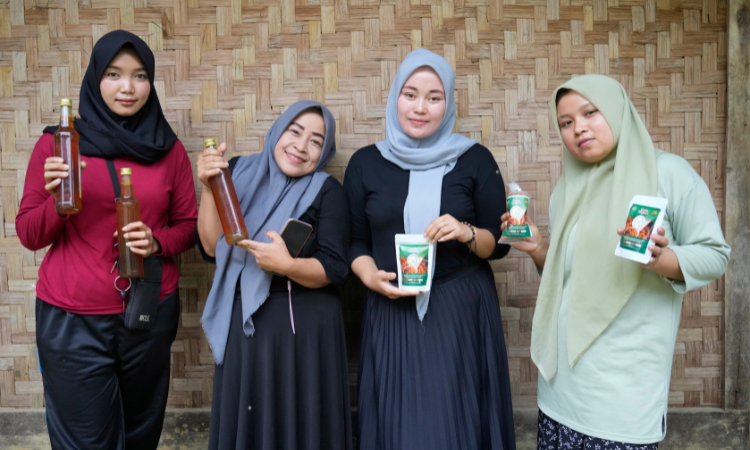
From a conservation perspective, it was crucial to reduce pressure on forests by providing sustainable livelihood opportunities, Srinivasan says. In West Kalimantan, for example, the project supported agroforestry, ecotourism, traditional crafts, beekeeping, candlenut, and honey production, among other activities, strengthening local economies. “So, it’s a win-win situation,” he says. “We also tried to influence the private sector to engage more with the communities, so they can jointly protect the forest.”
DGM grants, meanwhile, supported a range of initiatives from new fish nurseries and ponds to the production of bamboo and rattan products, to post-harvest processing of many different crops grown in or around forests, including not only sap sugar, but also coffee, ginger, sago (a starch or flour extracted from palm stems), and eucalyptus oil.
As with sap sugar in Cibarani, DGM investments enabled rural people to retain more of the value of their products – for example, in Papua’s Saribra village, the traditional community now has cold storage facilities for its fish and even buys other villages’ catch, selling it all on the market at higher prices than were attainable before.

Along with earning more money, some project participants have also been able to enhance their supplies of traditional foods. Junus Ukru, Chair of the Steering Committee of the Indonesia DGM, highlights Iha Mahu, a village on Saparua Island, Maluku, as an example. Their staple food was historically sago, but large-scale harvesting in recent years had been depleting the palms, and households were increasingly eating rice, which isn’t grown locally. A DGM-funded project enabled a women’s group to start managing sago production, creating added-value flour products for sale, and enhancing local food security and independence.
“Previously, sago was only seen as a form of traditional food,” Ukru says. Now people are more aware of the benefits of protecting the palms, “because they can not only be used for food, but can also be developed into products that can bring in income.”
In Cibarani, Nita sees that connection as well, and she wants everyone to be aware of the importance of conservation. “Forests must be genuinely protected,” she says. “Trees shouldn’t be cut down randomly, must not be touched. Absolutely. … Because everyone’s livelihoods mostly come from the forest.”

